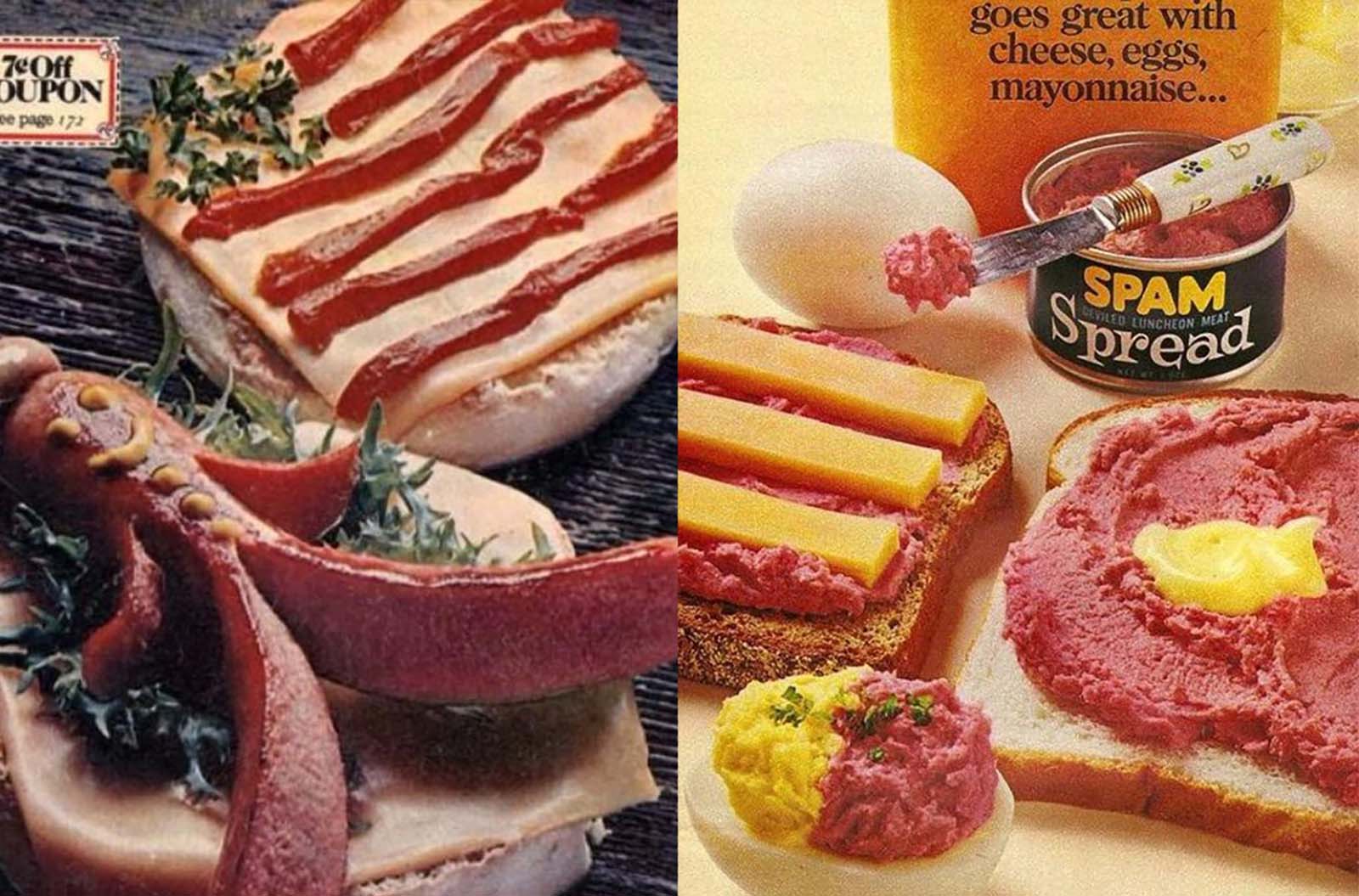
Advertising has always been an interesting way to trace how modern society has evolved. At the core, the marketing campaigns are based on what people want and what appeals to them. When you judge human history based on old advertisements, the past will start looking a lot weirder than you thought.
These photos of bizarre vintage food advertisements are mostly from the 1950s and 1960s and would probably be considered distasteful if these were published in this generation. In a way, the ads also reflect changing food tastes, diet, and dietary habits.
The 1950s and 1960s were a decade in which most American women were not employed outside the home. Most families had only one car, fast food was not nearly as ubiquitous as it is today, and married women were called housewives and or homemakers.
For many families, eating out was usually reserved for special occasions. Advertisements tried to hit that spot.
Much food advertising was targeted at women, the main buyers of food in the household. As children are recognized as important persuaders in that process and as they may accompany their mothers to buy the family food, advertising is also targeted at them.
Newspapers and magazines have long been a significant vehicle for advertising. In the United States in the 1930s-1940s, some 20 percent of products advertised in the major print advertising media of women’s and domestic magazines were for food and drink products.

In the early 20th century, psychologists Walter D. Scott and John B. Watson contributed applied psychological theory to the field of advertising.
Scott said, “Man has been called the reasoning animal but he could with greater truthfulness be called the creature of suggestion. He is reasonable, but he is to a greater extent suggestible”.
He demonstrated this through his advertising technique of a direct command to the consumer. The former chair at Johns Hopkins University, John B. Watson was a highly recognized psychologist in the 1920s.
After leaving the field of academia he turned his attention towards advertising where he implemented the concepts of behaviorism into advertising. This focused on appealing to the basic emotions of the consumer: love, hate, and fear.
This type of advertising proved to be extremely effective as it suited the changing social context which led to heavy influence of future advertising strategy and cemented the place of psychology in advertising.
 Postwar era advertising
Postwar era advertising
In the prosperous postwar era, millions of Americans moved into new housing, especially in the rapidly growing suburbs. They spent heavily on housing, appliances, furniture, clothing and automobiles.
The coming of television in the 1950s dramatically enlarged the arena for advertising. With most families having automobiles, and more leisure time, travel holidays became much more common, and the motel and tourism industries eagerly supported large-scale advertising.
In the public service arena, the Ad Council aggressively promoted Americanism as a Cold War strategy, with campaigns such as the Freedom Train, the Crusade for Freedom, Religion in American Life, Adams for Piece, and Peoples Capitalism.
The new Brand Names Foundation sponsored conferences, local campaigns, and educational programs to promote brand loyalty, as well as free enterprise.
In The Hidden Persuaders (1957) popular writer Vance Packard exposes the use of consumer motivational research and other psychological techniques, including depth psychology and subliminal tactics.
They had been used to manipulate expectations and induce desire for products since the 1920s, but the popular audience was caught by surprise.
He identified eight “compelling needs” that advertisers promise products will fulfill. According to Packard these needs are so strong that people are compelled to buy products to satisfy them. The book questions the morality of using these techniques.






























(Photo credit: Wikimedia Commons / Vintage Ads Database / Britannica / Pinterest).
Updated on: June 10, 2022
Any factual error or typo? Let us know.



